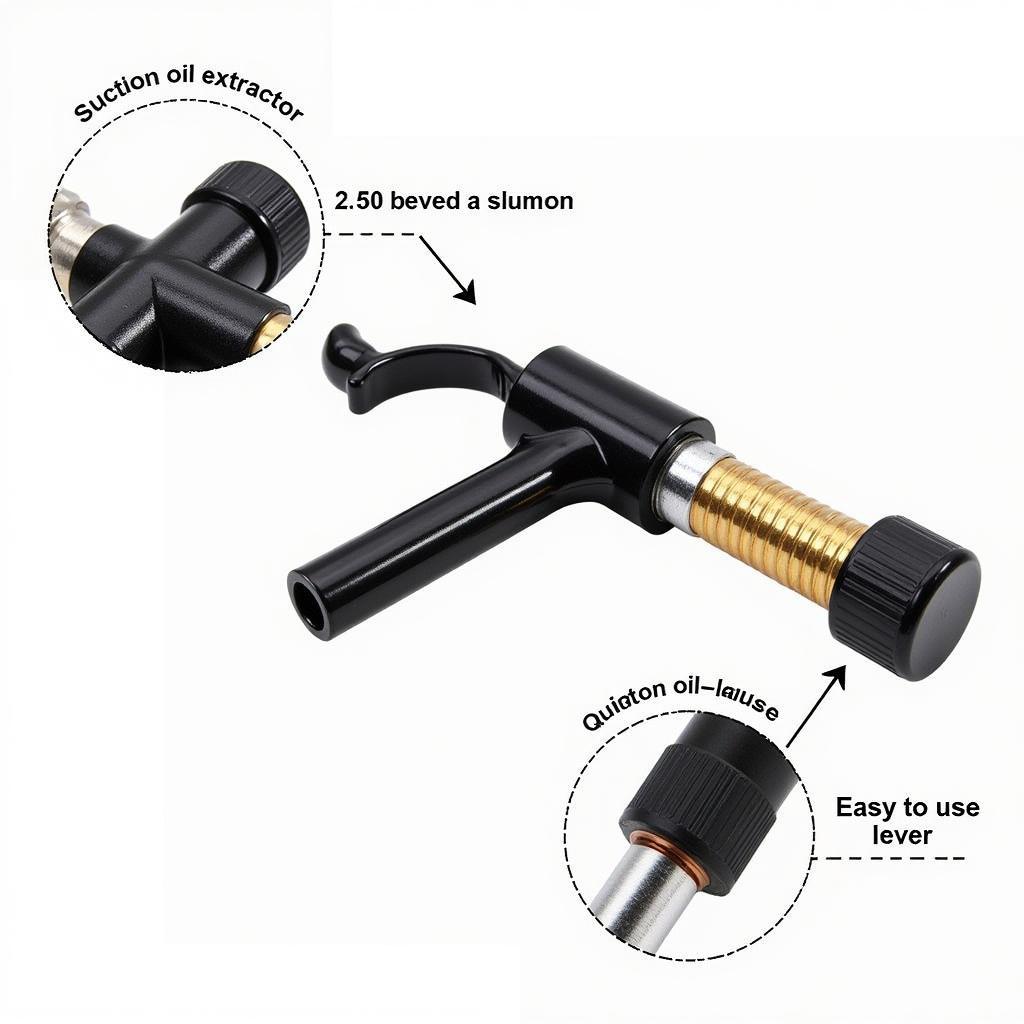Modern cars demand modern solutions, and that includes how we approach something as fundamental as an oil change. Adaptive tools for changing car oil are revolutionizing this essential maintenance task, making it faster, cleaner, and more efficient for both DIY enthusiasts and professional mechanics. These tools offer a range of benefits, from minimizing mess and spills to ensuring precise measurements and improving overall workflow.
The Evolution of Oil Change Tools
For decades, the process of changing car oil remained relatively unchanged. A wrench, a drain pan, and some elbow grease were the standard tools of the trade. However, as vehicle designs became more complex and environmental concerns grew, the need for more sophisticated and adaptive tools became apparent. Enter the era of specialized pumps, extractors, and quick-release valves designed to simplify the process and reduce the environmental impact of oil changes.
Why Adaptive Tools Are Essential for Modern Vehicles
Modern vehicles present unique challenges when it comes to oil changes. Lower ground clearances, intricate engine designs, and the increasing use of synthetic oils require tools that can adapt to these complexities. Traditional methods often fall short, leading to potential messes, inaccuracies, and even damage to sensitive engine components. Adaptive tools, on the other hand, are specifically designed to address these challenges. They allow for precise oil extraction, minimize the risk of spills, and ensure a cleaner, more efficient oil change process.
Benefits of Using Adaptive Tools
- Reduced Mess and Spills: Adaptive tools, such as oil extractors, eliminate the need to remove the drain plug, which is a common source of spills. This keeps your workspace clean and minimizes the risk of environmental contamination.
- Improved Efficiency: These tools can significantly speed up the oil change process, saving valuable time and effort.
- Enhanced Accuracy: Adaptive tools often feature precise measurement markings, ensuring the correct amount of oil is extracted and replaced.
- Greater Accessibility: With vehicles featuring increasingly complex undercarriage designs, adaptive tools offer a more accessible way to reach and drain oil.
- Environmentally Friendly: By minimizing spills and ensuring proper disposal, these tools contribute to a more eco-conscious approach to car maintenance.
Choosing the Right Adaptive Tools for Your Needs
Selecting the appropriate adaptive tool depends on several factors, including your vehicle type, your level of mechanical expertise, and your budget. Some popular options include:
- Oil Extractors: These tools use suction to remove oil through the dipstick tube, eliminating the need to crawl under the car.
- Quick-Release Valves: These valves replace the standard drain plug, allowing for quicker and cleaner oil drainage.
- Specialized Wrenches and Sockets: These are designed to access hard-to-reach drain plugs and filters.
What are the best adaptive tools for changing car oil on a low-profile vehicle?
Oil extractors are often the best choice for low-profile vehicles as they avoid the need to access the undercarriage.
How do I choose the correct size oil extractor?
Choose an extractor with a capacity slightly larger than your vehicle’s oil capacity.
“Investing in quality adaptive tools not only makes oil changes easier but also extends the life of your engine by ensuring proper maintenance,” says Robert Johnson, Senior Automotive Engineer at AutoTech Solutions.
Maintaining Your Adaptive Tools
Proper maintenance of your adaptive tools will ensure their longevity and effectiveness. This includes regular cleaning, proper storage, and occasional replacement of worn parts.
How often should I clean my oil extractor?
Cleaning after each use is recommended to prevent oil buildup and ensure accurate measurements.
“Regular cleaning of your adaptive tools is crucial for preventing cross-contamination and maintaining their accuracy,” advises Maria Sanchez, Lead Mechanic at Precision Auto Care.
Conclusion
Adaptive tools for changing car oil are no longer a luxury but a necessity for modern vehicle maintenance. They offer significant advantages over traditional methods, improving efficiency, accuracy, and environmental responsibility. By investing in the right adaptive tools and maintaining them properly, you can simplify the oil change process, protect your vehicle, and contribute to a cleaner environment. For more information or assistance in choosing the right adaptive tools, contact us via WhatsApp: +1(641)206-8880, Email: [email protected] or visit us at 910 Cedar Lane, Chicago, IL 60605, USA. Our 24/7 customer support team is ready to help.
FAQ
- Are adaptive tools compatible with all vehicle types?
- What is the average lifespan of an oil extractor?
- How do I dispose of used oil properly?
- Are there specific safety precautions to consider when using these tools?
- Where can I purchase quality adaptive tools for changing car oil?
- Can I use adaptive tools with synthetic oil?
- Are there any online resources available for learning how to use these tools effectively?
You might also find these other topics on car maintenance in our website helpful:
- Oil Filters Comparison
- Synthetic vs Conventional Oil
- DIY car maintenance tips
- Car diagnostic tools
If you need any further assistance, feel free to contact us.

